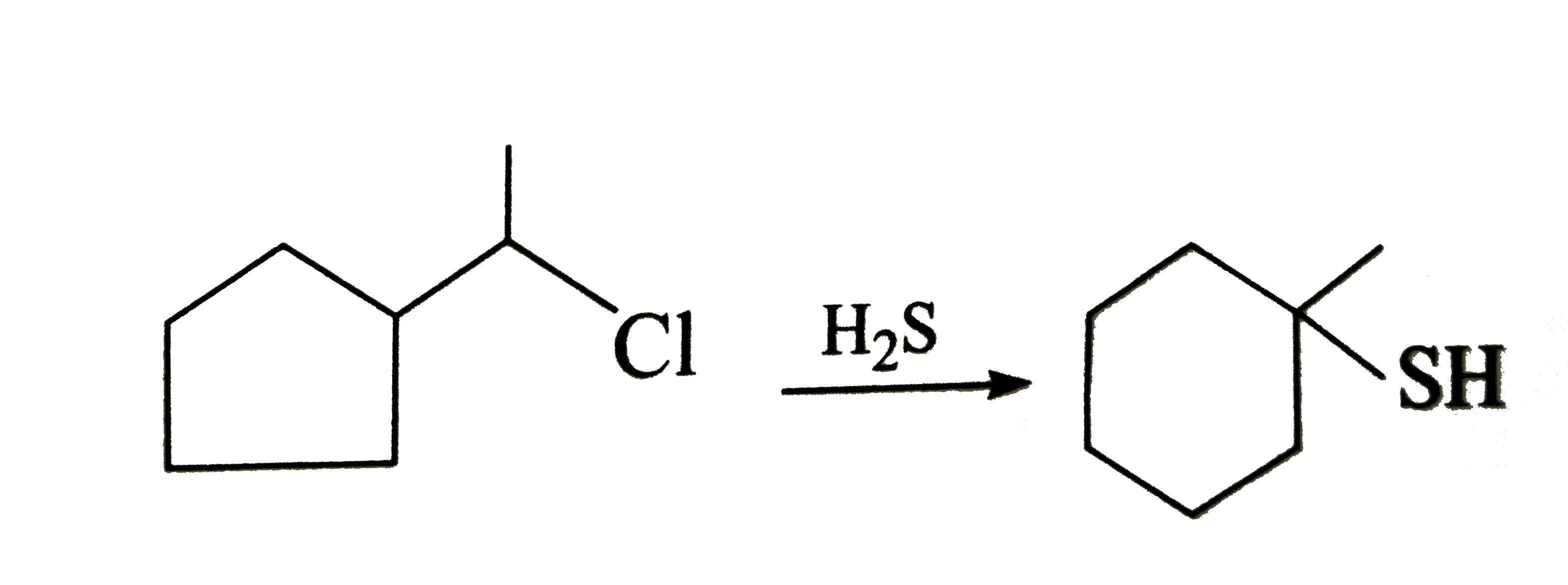The one giving maximum number of isomeric alkenes on dehydrohalogenation reaction is (excluding rearrangement)
2-Bromopentane
1-Bromo-2-methylbutane
2-Bromopropane
2-Bromo-3,3-dimethylpentane
The correct Answer is:A
To solve the problem of determining which compound gives the maximum number of isomeric alkenes upon dehydrohalogenation, we will analyze the options provided. The focus will be on the structure of the compounds and the potential alkenes that can be formed from them.
1. Identify the Compounds: The question likely presents several compounds, but we will focus on the example given in the transcript, which is 2-bromopentane.
2. Understand Dehydrohalogenation: Dehydrohalogenation is a reaction where a hydrogen halide (HX) is removed from an alkyl halide, resulting in the formation of an alkene. The general reaction can be represented as:
R−CHBr−CH2−CH2−R′→R−CH=CH−CH2−R′+HBr
3. Draw the Structure of 2-Bromopentane: The structure of 2-bromopentane is:
CH3−CHBr−CH2−CH2−CH3
This compound has a bromine atom on the second carbon of a five-carbon chain.
4. Determine Possible Alkenes: Upon dehydrohalogenation of 2-bromopentane, we can form different alkenes:
- 1-Pentene: Formed by removing H from the first carbon and Br from the second carbon.
- 2-Pentene: Formed by removing H from the second carbon and Br from the second carbon. This can exist as:
- Cis-2-pentene
- Trans-2-pentene
5. Count the Isomers: From the above analysis, we can summarize the possible alkenes:
- 1-Pentene (1 isomer)
- Cis-2-pentene (1 isomer)
- Trans-2-pentene (1 isomer)
Thus, the total number of isomeric alkenes formed from 2-bromopentane is 3.
6. Compare with Other Compounds: If we were to analyze other compounds like 1-bromobutane or 2-bromopropane:
- 1-Bromobutane: Would only yield 1-butene (1 isomer).
- 2-Bromopropane: Would yield only propene (1 isomer).
7. Conclusion: After comparing the number of isomeric alkenes formed from various alkyl halides, it is clear that 2-bromopentane gives the maximum number of isomeric alkenes (3).
Final Answer:
The compound that gives the maximum number of isomeric alkenes on dehydrohalogenation is 2-bromopentane.
R−CHBr−CH2−CH2−R′→R−CH=CH−CH2−R′+HBr
CH3−CHBr−CH2−CH2−CH3
This compound has a bromine atom on the second carbon of a five-carbon chain.
- 1-Pentene: Formed by removing H from the first carbon and Br from the second carbon.
- 2-Pentene: Formed by removing H from the second carbon and Br from the second carbon. This can exist as:
- Cis-2-pentene
- Trans-2-pentene
- 1-Pentene (1 isomer)
- Cis-2-pentene (1 isomer)
- Trans-2-pentene (1 isomer)
- 1-Bromobutane: Would only yield 1-butene (1 isomer).
- 2-Bromopropane: Would yield only propene (1 isomer).
The compound that gives the maximum number of isomeric alkenes on dehydrohalogenation is 2-bromopentane.
Topper's Solved these Questions
Similar Questions
Knowledge Check
The maximum number of isomer for an alkene with the molecular formula C4H8 is
AtwoBthreeCfourDfiveWhich of the following compound will give three alkenes after dehydrohalogenation.
ACH3−CH2−CH2−CH2−BrBCH3−CH2−C∣BrH−CH3CCH3−CH3∣C∣Br−CH3DCH3−CH2−C∣BrH−PhMinimum number of carbon atoms required in an alkene to exhibit isomerism is
A2B3C4D5
How many structural isomeric alkenes on hydrogenation give −n-Pentane.
View SolutionTotal number of isomeric alkene possible with compound having molecular formula C4H8 is
View SolutionGive possible mechanism of the given reaction using carbocation rearrangement.

View SolutionGive chemical reaction to illustrate Fries rearrangement.
View SolutionHow many isomeric structural alkene on catalytic hydrogeneation gives 3-Methyl hexane
View Solution

